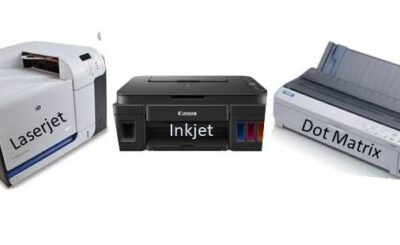This section will describe what are the classifications of computers according to their sizes, functions, and purposes.
Classifications of Computers
The computers are classified in to different categories according to their purposes, sizes and data handling.
The computer comes in a variety of sizes and shapes according to their uses and applications with varying processing capabilities. In the early days, computer sizes were as large as the building rooms and the processing speed was relatively slower. As technology advances, the size of the computer drastically decreases with the advent of the microprocessor technology and the processing speed was also increased.
Classifications of computer-based on purpose
A computer is broadly classified into two categories according to their purpose:
- General-purpose computer
- Specific-purpose computer
General-purpose computer
A general-purpose computer is designed to perform a common range of tasks. These types of computers have the ability to store multiple programs. They can be used for business applications, scientific purposes, for educations, and for home use. Even though such computers are versatile, they are not much efficient and also slower in speed.
Specific-purpose computer
Specific-purpose computers are made to perform a specific task or it can handle a single specific task. They are not designed to handle multiple programs. Hence, they lacked versatility. Since they are made to handle a specific task, they are more efficient and faster than general-purpose computers. These computers are used for satellite tracking, air-traffic control, airline reservations etc.
Classifications of computer-based on data handling
The computer is further classified into three categories according to their data handling capabilities or how they process the input data in a different manner. They are:
- Digital computer
- Analog computer
- Hybrid computer
Digital Computer
A digital computer deals with the data that can be stored in binary format i.e. in the form of 0s and 1s. The data or information in this computer is stored in voltage pulses which represent either 0 or 1. Any type of data whether it may be a text document, music files, or graphic images, all are converted into binary format before it can be stored into a computer’s memory. It is a device that manipulates discrete data and performs arithmetic and logical functions.
Analog Computer
Analog computer is used to process the analog data. The analog data is continuously changing or varying data. The analog computer is used to measure the continuous varying aspects of physical quantities like an electrical current, voltages, hydraulic pressure, or other electrical and mechanical properties. Analog computer does not measure the discrete values. They are used in scientific and industrial applications.
Hybrid Computer
A hybrid computer constitutes both analog and digital computer systems. The hybrid computer has the capability to process the input in both the analog and digital formats. The analog portion of the system can handle the continuous varying aspects of complex mathematical computation, whereas the digital portion handles the numerical and logical operation. The digital portion also acts as the controller of the system.
Examples: hybrid computers are used in medical science to measure the heartbeat of the patient, also used in controlling industrial processes and scientific applications.
Classifications of computer-based on their functionality and sizes
The computer is divided into four categories based on their physical sizes, functionality, and applications. They are:
- Supercomputer
- Mainframe computer
- Minicomputer
- Microcomputer
Supercomputer
Supercomputers are the largest, fastest, most powerful, and expensive among digital computers. The first supercomputer was built in the 1960s for the Department of Defence of the United States of America (USA). Supercomputers derive their speed from the use of multiple processors and can be accessed by many individuals at the same time. Supercomputers are used primarily for scientific applications and complex calculations in large volumes. The aerospace, automotive, chemical, electronics, and petroleum industries use them extensively and they are also used for weather forecasting and seismic analysis. Some of the famous supercomputers are Jaguar, Nebulae, Roadrunner, Kraken, Tianhe-1, etc.
Mainframe computer
Mainframe computers or mainframes are the most widely used type of digital computers in large industries for controlling processes and in offices for maintaining networks and allowing access to shared resources. IBM holds an estimate of two-thirds of the mainframe market. For intensive operation, they are much more suitable than supercomputers. Many modern computers have multi-processing capabilities; however, they are generally limited to eight or fewer processors. The processor’s speed is measured in megaflops (millions of floating-point arithmetic operations per second. Mainframe computer systems are powerful enough to support a hundred users simultaneously at remote terminals. It can support hundreds of users by keeping numerous programs in primary memory and rapidly switching back and forth between them. This capacity to process many programs simultaneously for multiple users is known as multi-programming.
Examples of mainframe systems are: IBM-3000 series, IBM 4300, IBM 3090, etc
Mini computer
The age of mini computers started in the 1960s when Digital Equipment’s Corporation (DEC) released the first DEC PDP-8 minicomputer in 1968. Like mainframes, most mini-computers are multiuser and general-purpose computers. The major difference between mainframes and minicomputers is that mini-computers are slower even if they perform the same type of tasks as mainframes. For example, the PDP series.
Microcomputer:
A microcomputer is the most commonly used computer that is generally used at homes, schools, banks, offices, etc. It is a small, low-cost digital computer that consists of a single microprocessor, storage unit, and input /output device. The microcomputer is generally made for individual use only. They were originally called microcomputers because they are much smaller in size as compared to supercomputers and mainframes. They are commonly used in homes, offices and personal use, hence also called a personal computer. The microcomputer includes desktop computers and portable computers like a laptop, personal digital assistant (PDA)
Desktop computer
A desktop computer or more popularly known as PC (Personal computer) is the most commonly used microcomputer. It consists of a CPU (Central Processing Unit), keyboard and mouse as input units, monitor or display unit as an output device. The CPU consists of Microprocessor, main memory, secondary storage unit like hard drive, optical drive, power supply unit that is housed in a single cabinet. Some of the major desktop computer manufacturers are IBM, Apple, Dell, and Hewlett-Packard.
Portable computer
Other than desktop computers, portable computers like laptops and PDAs have become more favorite among individuals. The best part of this portable computer is that it can be easily carried along by the individual. Laptops too consist of all the components as the desktop computer constitutes, but they are more compact and smaller in size.
Another portable computer is a portable digital assistant (PDA) which is the size of the palm. Hence, it is also called a palmtop computer. The PDAs are used to organize schedules, take important notes, set reminders, do mathematical calculations, play games, and even surf the internet and send emails. Apple launched the first PDA called Newton in 1993. The other most commonly used PDAs are Palm Pilot, Handspring Visor, HP Jordana, Compaq Aero, Franklyn eBook man, etc.
But, nowadays, PDAs are replaced by smartphones. Smartphones are handheld devices that combine the features of PDAs and cell phones. Smartphones are the popular handheld device among the individuals and are used to store information, perform mathematical calculation, surf internet, and e-mail, and is used for voice calling. However, the features of smartphones are more oriented towards cell phones. The features of PDAs are add-on facilities in smartphones.




Thanks for your support
Hello, This post really very helpful.